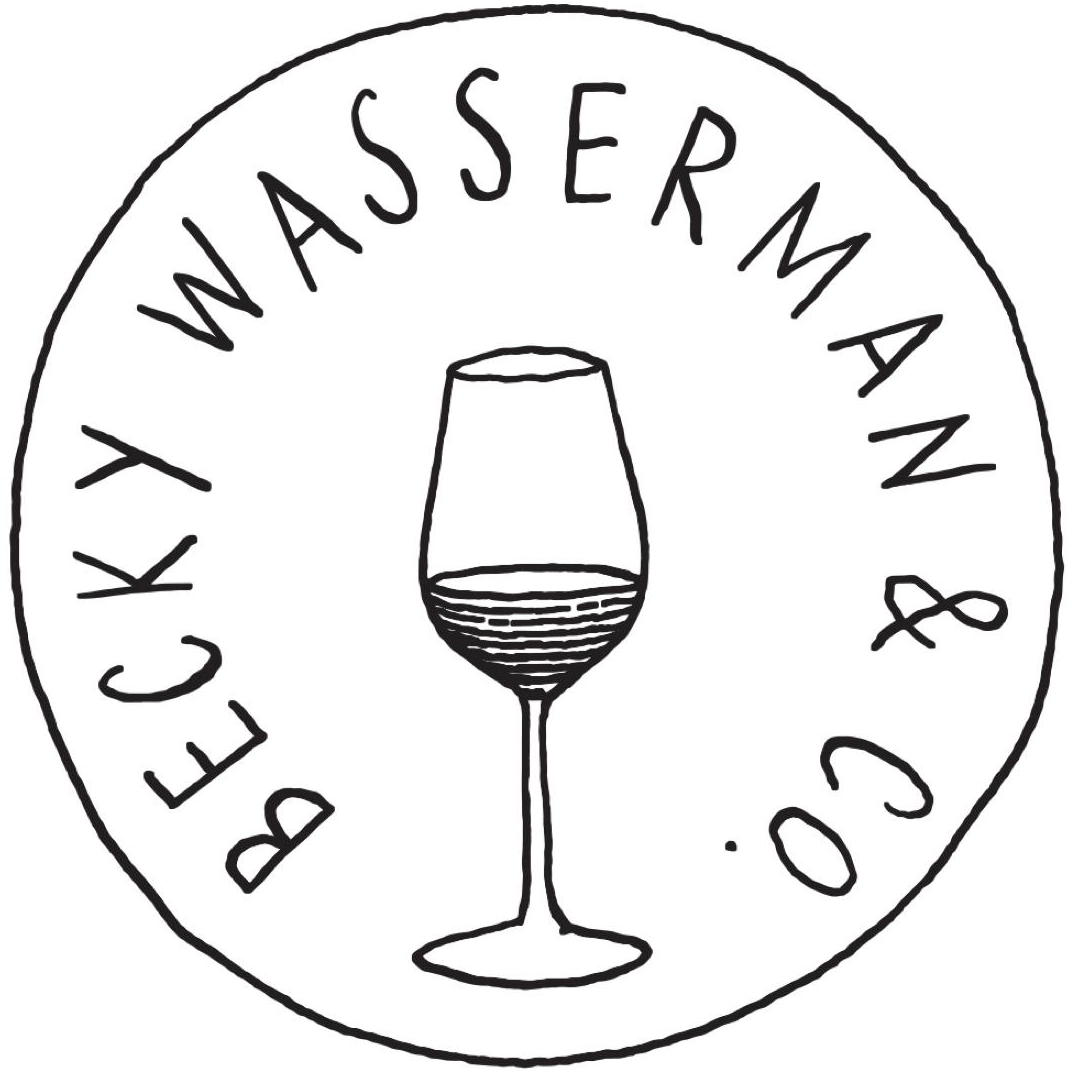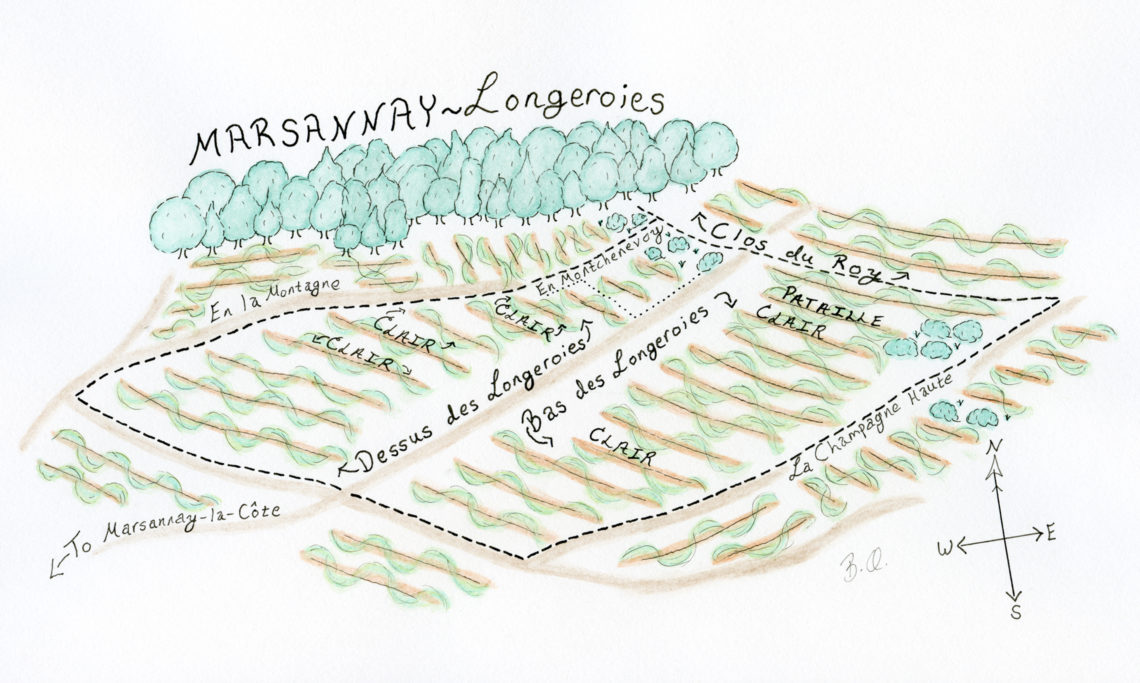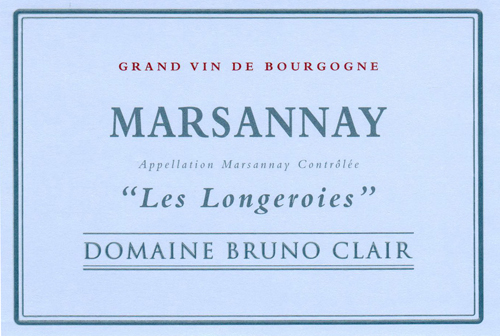Marsannay Les Longeroies
At a Glance
- Size: 1.36 ha (3.36 ac)
- Variety: Pinot Noir
- Vine Age: Half planted 1924-1928, the other half in 1962 and 1980
- Terroir: East/southeast-facing, with an upper section of limestone slabs and a lower section of thick reddish marl with combe scree.
- Viticulture: Sustainable, organic practices
- Vinification: 30-50% whole cluster, ambient yeast fermentation in open wood vats with punch-downs. Aged 18-20 months in barrels (approx. 25% new). Short blending period in tank before bottling.
Additional Info
Etymology: Longeroies is a combination of the words longe meaning “long and narrow.” Roie means “furrow,” a long narrow trench made in the ground by a plow.
Source: The Climats and Lieux-Dits of the Great Vineyards of Burgundy, Marie-Hélène Landrieu-Lussigny.
Site: Les Longeroies is a very large vineyard spanning a kilometer from north to south. It is divided into three parcels: Dessus des Longeroies, Bas des Longeroies, and En Montchenevoy. The three parcels total 36 hectares (89 acres). The vineyard sits at 275-meters elevation. The slope is moderate. It faces southeast.
Soil: The soils are thinner at the top (30-40 cm) and deeper at the bottom of the slope (70-80 cm). In general, the soil of Bas Longeroies is gravelly, and light reddish-orange to tan in color. The soils here contain a mixture of many different types of limestone coming from many different places. The western portion of the vineyard is dominated by the limestone found upslope and from the combe to the southwest, whereas the eastern portion of the vineyard at the bottom of the slope is dominated by ancient alluvium from the Ouche river.
Geology: The northern portion of Marsannay rests on a large block of rock that has been literally “down-dropped”, meaning that the slope is made up of younger rocks that are usually found at the very top of the slopes. These rocks include White Oolite at the top of the vineyard and hard, pink Premeaux limestone. Comblanchien limestone is located just above the vineyard and is included in the slopewash found below. The middle and lower portions of Bas Longeroies also include sandy marl and ancient alluvium from the old Ouche riverbed (It now runs further east).
Clair parcel: Bruno owns several parcels throughout Bas des Longeroies. They run the entire length of the slope. They include some of the oldest vines of the domaine. Half of the vines were planted in 1926 and the other half, between 1979 and 1985.
The Wine: Bas des Longeroies is clearly one of the best vineyards in Marsannay. Along with Clos du Roy, it is a shoo-in for premier cru status. Of the Clair Marsannay lieux-dits, Les Longeroies is, at the same time, the most serious and the most refined. In its youth, the fruit is reserved, and the structure is mineral, gravelly, and long. This is precisely the type of shape we most admire, especially for laying down.
With many thanks to geologist Brenna Quigley for her illustration, and for putting the physical and geologic aspects of these vineyards into words far more meaningful than we could have written on our own. https://www.brennaquigley.com
We are also greatly indebted to geologist Françoise Vannier of Adama Terroirs Viticoles who created the soil and bedrock maps for Fixin that Brenna based part her work on. www.adama-terroirs.fr
Wines
-
White
-
Rosé
-
Red
- Aloxe-Corton
- Chambolle-Musigny Les Véroilles
- Chambolle-Musigny 1er Cru Les Charmes
- Fixin Champs Perdrix
- Gevrey-Chambertin
- Gevrey-Chambertin 1er Cru Clos du Fonteny Monopole
- Gevrey-Chambertin 1er Cru Petite Chapelle
- Gevrey-Chambertin 1er Cru Les Cazetiers
- Gevrey-Chambertin 1er Cru Clos Saint-Jacques
- Marsannay Rouge
- Marsannay Les Vaudenelles
- Marsannay La Charme Aux Prêtres
- Marsannay Les Grasses Têtes
- Marsannay Les Longeroies
- Morey-Saint-Denis En La Rue De Vergy
- Savigny-les-Beaune 1er Cru Les Jarrons
- Savigny-les-Beaune 1er Cru La Dominode
- Vosne-Romanée Les Champs Perdrix
- Vosne-Romanée 1er Cru Aux Raignots
- Bonnes-Mares Grand Cru
- Chambertin Clos de Bèze Grand Cru


